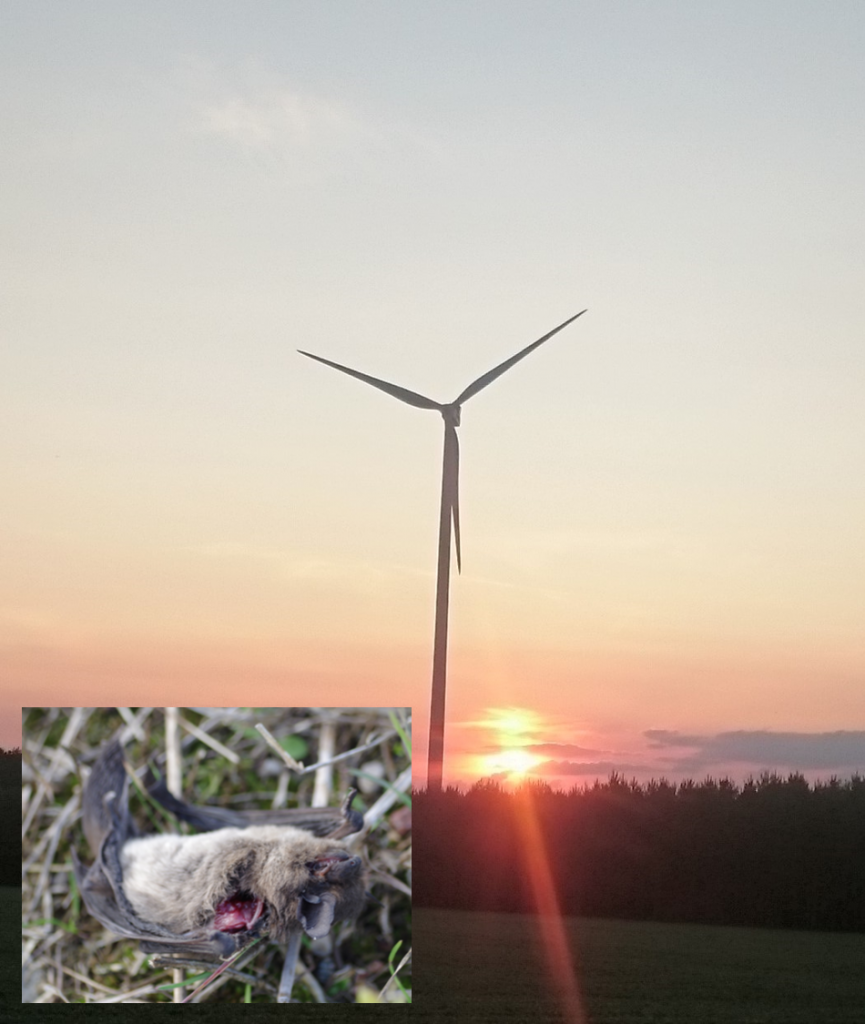Wind turbines can pose a threat to bats and cause many deaths worldwide. Death rates can vary greatly from wind farm to wind farm. The reasons why so many bats die from wind turbines are not yet fully understood. There have already been indications and assumptions that bats deliberately fly to wind turbines to search for roosts or hunt insects.
A recent study from the UK shows that common pipistrelles (Pipistrellus pipistrellus) get attracted by wind turbines. In the study, 23 wind farm areas with equivalent control areas were compared on the basis of their bioacoustically determined activity. In evaluating the results of the study, the authors focused on the Pipistrellusspecies, as they were the most frequently recorded overall. The activity of common pipistrelles was 37% higher at the wind turbines than at the control sites, while the activity of soprano pipistrelles (P. pygmaeus) did not show such pattern.
The results show that the activity of bats can change considerably after the construction of wind turbines. In view of this, it is also clear why preliminary investigations in the ecological assessment surveys are essential in the context of authorisation procedures, but are not sufficient for the determination of mitigation measures alone. Rather, the preliminary investigations should focus on the identification of site-specific risk factors (e.g. proximity to maternity roosts) that can have an influence on the location of the individual wind turbines. However, in order to determine reliable collision rates, in addition to the preliminary investigations, it is essential that post-construction monitoring always follows. The combination of these two approaches and the mitigation measures resulting from the results (e.B. shutdown algorithms) are currently the most effective way to reduce collisions. Reducing deaths at wind turbines through the full application of mitigation measures is crucial to avoid negative effects on bat populations as wind energy develops further.

Original study:
Richardson, S.M., Lintott, P.R., Hosken, D.J., Economou, T. & Mathews, F. (2021): Peaks in bat activity at turbines and the implications for mitigating the impact of wind energy developments on bats. Scientific Reports 11, 3636 (2021). https://doi.org/10.1038/s41598-021-82014-9
